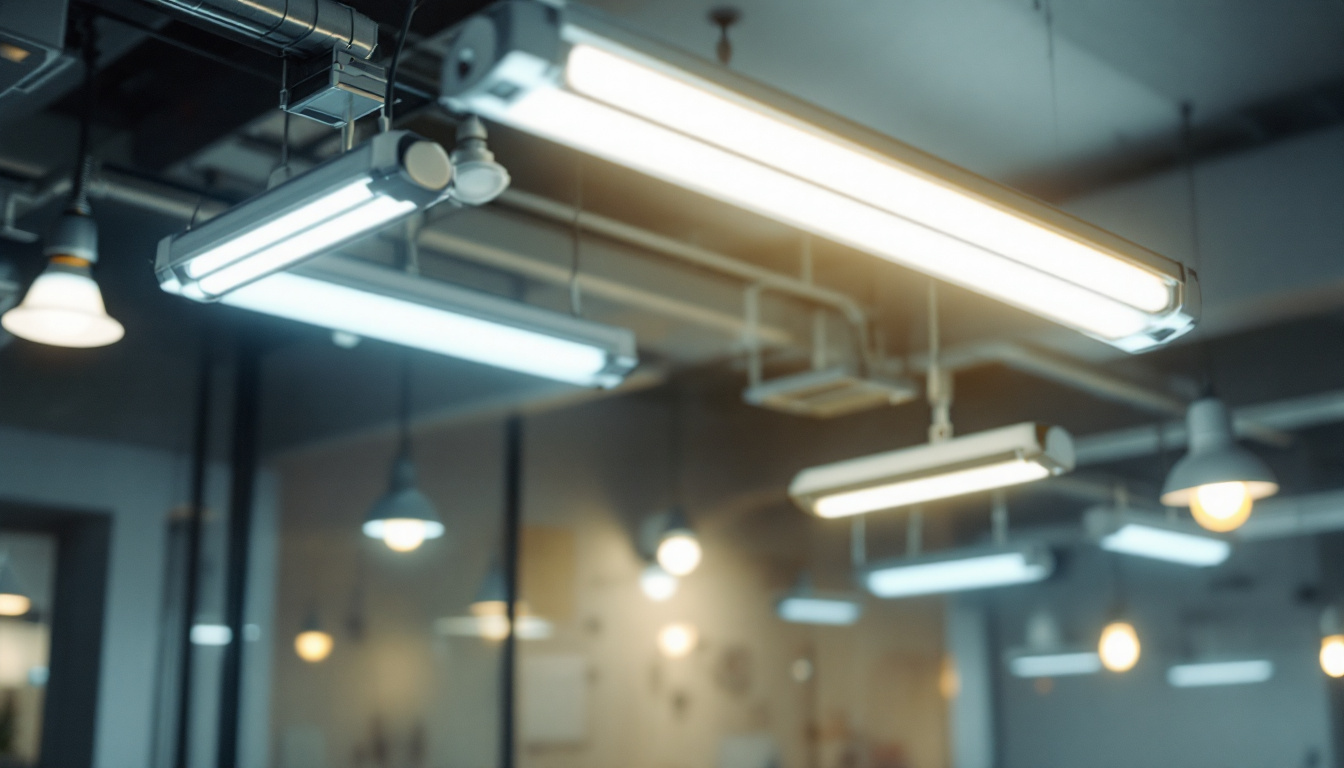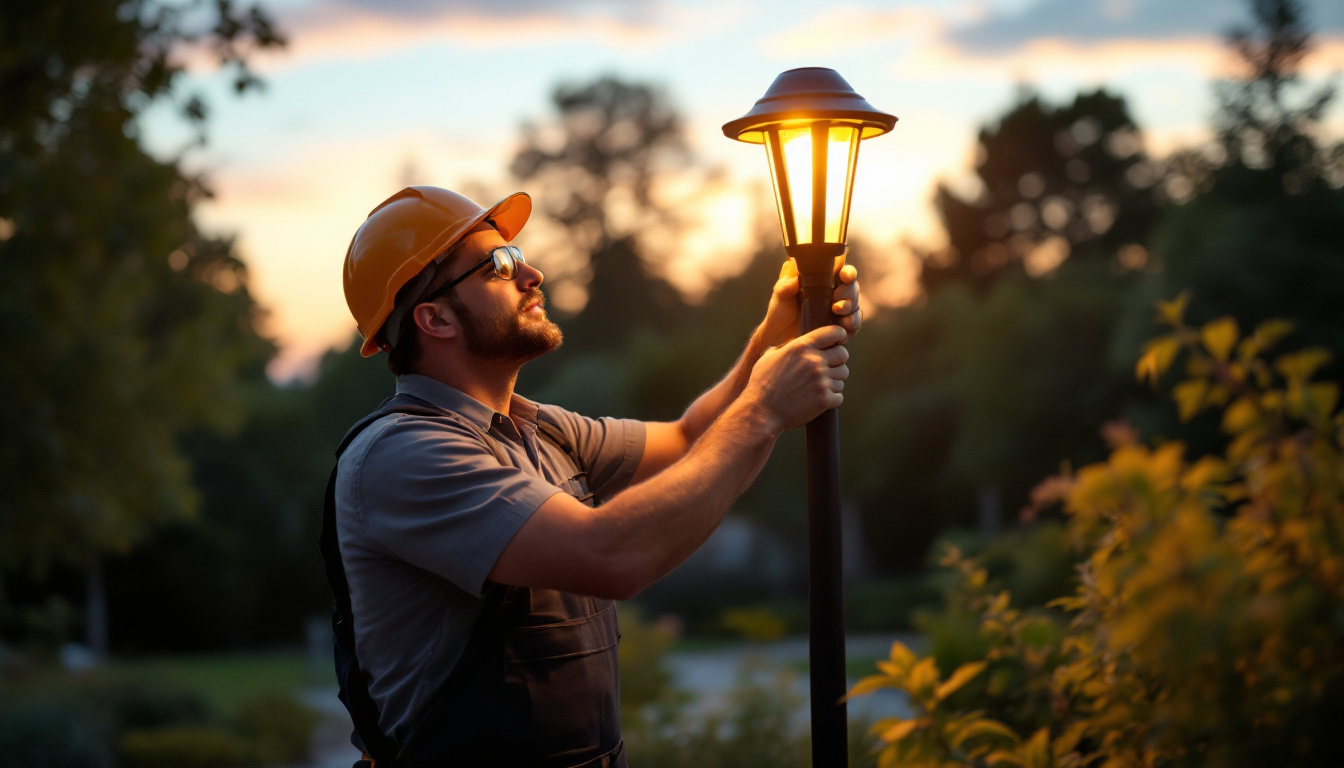
Fluorescent lamps have been a staple in the realm of lighting solutions for decades. Known for their energy efficiency and versatility, these lamps offer a wide array of applications, making them a preferred choice for both residential and commercial settings. For lighting contractors, understanding the nuances of fluorescent lamps can significantly enhance project outcomes, improve client satisfaction, and contribute to sustainable practices. This article delves into the various aspects of fluorescent lamps and how they can be leveraged to provide superior lighting solutions.
Fluorescent lamps operate on a simple yet effective principle. They contain a small amount of mercury vapor, which, when electrified, produces ultraviolet light. This UV light then interacts with a phosphor coating on the inside of the lamp, resulting in visible light. This technology not only allows for efficient energy use but also extends the lifespan of the light source compared to traditional incandescent bulbs.
There are several types of fluorescent lamps available, each designed for specific applications. The most common types include linear fluorescent lamps, compact fluorescent lamps (CFLs), and high-intensity discharge (HID) lamps. Understanding these types can help lighting contractors choose the right solution for their projects.
Linear fluorescent lamps are typically used in commercial and industrial settings, providing broad illumination over large areas. Compact fluorescent lamps, on the other hand, are ideal for residential use, as they fit into standard light fixtures and offer significant energy savings. HID lamps, while less common, are used in outdoor lighting and high-bay applications due to their high lumen output.
In addition to these common types, there are also specialized fluorescent lamps, such as black light lamps, which emit ultraviolet light and are often used in artistic and entertainment settings, as well as for pest control. Another variant is the circline fluorescent lamp, which has a circular shape and is commonly found in ceiling fixtures, providing a unique aesthetic along with efficient lighting. These variations allow for even more versatility in design and functionality, catering to a wide range of lighting needs.
The advantages of fluorescent lamps extend beyond their initial cost. One of the most significant benefits is their energy efficiency. Fluorescent lamps consume up to 75% less energy than incandescent bulbs, which translates to lower electricity bills for clients. Additionally, they have a longer lifespan, often lasting up to 10,000 hours or more, which reduces the frequency of replacements and maintenance costs.
Another key benefit is the quality of light produced. Fluorescent lamps are available in various color temperatures, allowing contractors to select the ideal hue for different environments. Whether it’s a warm light for a cozy living room or a cooler light for a workspace, fluorescent lamps can meet diverse lighting needs. Furthermore, advancements in technology have led to the development of dimmable fluorescent lamps, providing even greater control over lighting levels and enhancing the ambiance of any space. This flexibility makes them suitable for both functional and aesthetic applications, ensuring that they can be tailored to meet the specific requirements of any project.
Moreover, fluorescent lamps are also more environmentally friendly compared to their incandescent counterparts. Their lower energy consumption not only reduces greenhouse gas emissions but also contributes to a decrease in the demand for fossil fuels. Additionally, many fluorescent lamps are now designed to be more recyclable, allowing for responsible disposal and minimizing their impact on landfills. This eco-conscious aspect is increasingly important for businesses and homeowners alike, as sustainability becomes a key consideration in lighting choices.
Fluorescent lighting is incredibly versatile, making it suitable for a range of applications. From commercial spaces to residential homes, understanding where to apply fluorescent lamps can enhance functionality and aesthetics.
In commercial settings, fluorescent lamps are often used in offices, retail stores, and warehouses. Their ability to provide bright, even lighting makes them ideal for environments where visibility is crucial. For instance, in office spaces, proper lighting can enhance productivity and reduce eye strain among employees.
Moreover, the energy efficiency of fluorescent lamps aligns well with corporate sustainability goals. Many businesses are looking to reduce their carbon footprint, and opting for fluorescent lighting can be a significant step in that direction. Lighting contractors can play a vital role in advising clients on the best fluorescent solutions to meet their lighting needs while also contributing to environmental sustainability.
In residential settings, fluorescent lamps are increasingly popular due to their compact size and energy efficiency. They can be used in various fixtures, from ceiling lights to table lamps, providing homeowners with flexibility in their lighting design.
Furthermore, the availability of different color temperatures allows homeowners to create the desired ambiance in their living spaces. For example, a warm white light can create a cozy atmosphere in a living room, while a cooler light can be more appropriate for task-oriented areas like kitchens or home offices.
While fluorescent lamps offer numerous benefits, proper installation is crucial to maximize their performance and longevity. Lighting contractors must be aware of various factors that can influence the effectiveness of fluorescent lighting systems.
Fluorescent lamps require ballasts to regulate the current and voltage supplied to the lamp. It is essential to ensure compatibility between the lamp and the ballast. Using the wrong ballast can lead to flickering lights, reduced efficiency, and even lamp failure.
Contractors should also consider the type of ballast used. Electronic ballasts are generally more efficient and quieter than magnetic ballasts, making them a preferred choice for many applications. Understanding the differences can help contractors make informed recommendations to their clients.
The placement and layout of fluorescent lighting fixtures can significantly impact the quality of light in a space. Proper spacing between fixtures is essential to avoid dark spots and ensure even illumination. Contractors should take into account the height of ceilings, the purpose of the space, and the desired lighting effect when planning the layout.
In addition, dimming options should be considered. Some fluorescent lamps are compatible with dimming systems, allowing for greater control over light levels and energy consumption. This flexibility can enhance the functionality of the space and provide clients with more options for lighting control.
Maintaining fluorescent lighting systems is crucial for ensuring their longevity and optimal performance. Regular maintenance can prevent issues that may arise over time, such as flickering lights or reduced brightness.
Dust and dirt can accumulate on fluorescent lamps and fixtures, reducing their efficiency and light output. Regular cleaning is essential to maintain optimal performance. Contractors should advise clients on the best practices for cleaning their fixtures, including using non-abrasive materials and avoiding harsh chemicals that could damage the lamps.
Additionally, contractors should recommend periodic inspections of the lighting system. Checking for signs of wear and tear, such as flickering or buzzing sounds, can help identify potential issues before they escalate into more significant problems.
Lighting contractors should be equipped to troubleshoot common issues associated with fluorescent lamps. Flickering lights, for example, can often be attributed to a faulty ballast or a loose connection. In such cases, checking the ballast and ensuring all connections are secure can resolve the issue.
Another common problem is reduced brightness, which may indicate that the lamp is nearing the end of its lifespan. Contractors should educate clients on the typical lifespan of fluorescent lamps and recommend timely replacements to maintain consistent lighting quality.
The lighting industry is continually evolving, and fluorescent lighting is no exception. Recent innovations have enhanced the performance and efficiency of fluorescent lamps, providing even more options for contractors and their clients.
Advancements in technology have led to the development of energy-efficient fluorescent lamps that consume even less power than traditional models. These new lamps often incorporate improved phosphor coatings and advanced ballast designs, resulting in higher lumen output with lower energy consumption.
Lighting contractors should stay informed about these innovations to offer clients the most efficient and cost-effective solutions. By recommending the latest energy-efficient options, contractors can help clients save on energy costs while also contributing to sustainability efforts.
Another exciting development in fluorescent lighting is the integration of smart technology. Smart fluorescent lamps can be controlled via mobile apps or smart home systems, allowing users to adjust brightness, color temperature, and even set schedules for their lighting.
This technology not only enhances convenience but also promotes energy savings by allowing users to optimize their lighting usage based on their needs. Contractors should consider incorporating smart lighting solutions into their offerings, as this can provide clients with greater flexibility and control over their lighting environments.
Fluorescent lamps remain a reliable and efficient lighting solution for various applications. By understanding the different types of fluorescent lamps, their benefits, and the best practices for installation and maintenance, lighting contractors can provide superior lighting solutions that meet their clients’ needs.
As the industry continues to evolve, staying informed about innovations in fluorescent lighting will be crucial for contractors looking to enhance their service offerings. By leveraging the advantages of fluorescent lamps, contractors can contribute to energy efficiency, sustainability, and overall client satisfaction.
In a world where lighting plays a vital role in our daily lives, embracing the potential of fluorescent lamps can lead to better lighting solutions that illuminate spaces effectively and sustainably.
Ready to elevate your lighting solutions with the efficiency and sustainability of fluorescent lamps? At LumenWholesale, we provide lighting contractors with the highest quality, spec-grade fluorescent lamps at unbeatable wholesale prices. Say goodbye to local distributor markups and hello to our extensive selection that meets rigorous industry standards. With free shipping on bulk orders, you can trust that you’re getting premium lighting at the best value — no hidden fees, no compromises. Make your next project shine by choosing LumenWholesale, where quality, affordability, and convenience come together. Discover our range and take advantage of the best value in wholesale lighting by visiting Wholesale Lighting at the Best Value today.

Discover the key factors that distinguish top lighting contractors in the retrofit can lights industry.

Discover the pitfalls lighting contractors often encounter with industrial LED fixtures.

Discover the crucial aspects lighting contractors frequently miss when working with Hydrofarm systems.

Explore the science of post lighting and its impact on outdoor spaces.